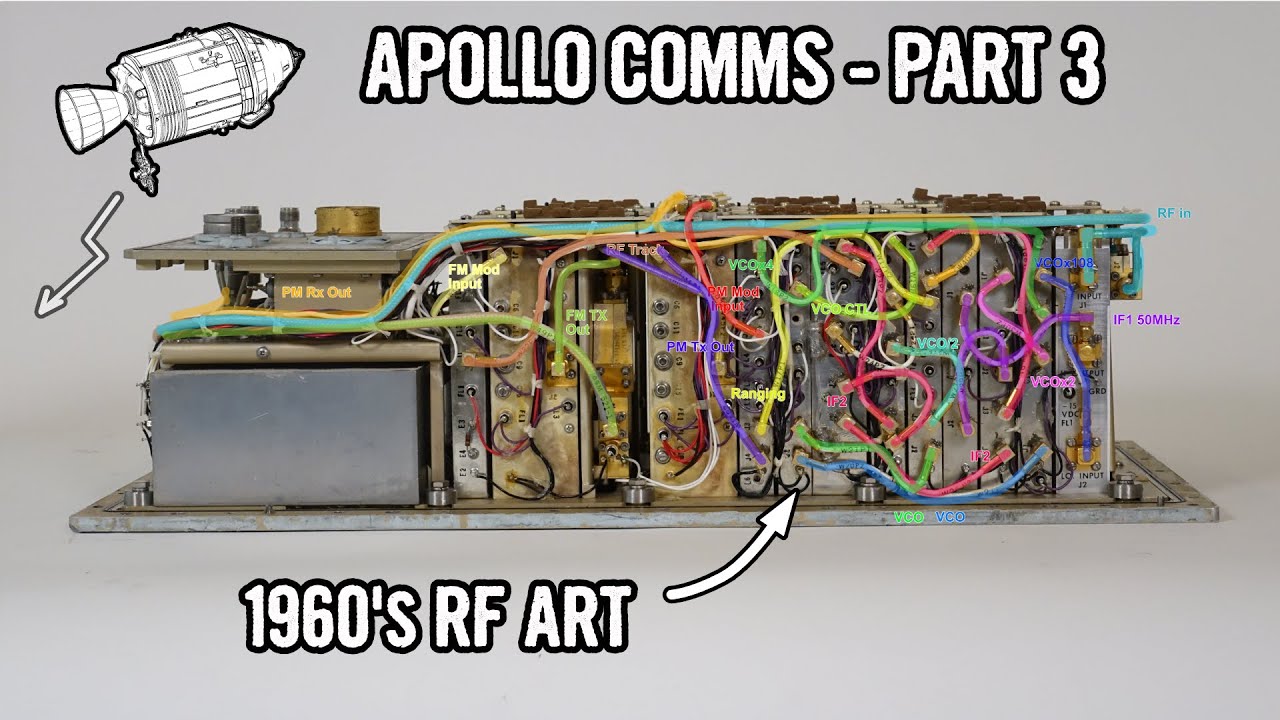After explaining the overall architecture of the Apollo spacecraft communication system in Part 1 and the radio frequency power amplifier in Part 2, now it’s time to examine the heart of the system: the S Band Transponder. This is the unit that received signals from the ground, transmitted back a frequency-shifted signal that allowed ranging and Doppler velocity measurements, and multiplexed voice, telemetry, and computer data onto the microwave link. The transponder provided two completely redundant units, each with its own power supply. In addition, it included a separate, non-redundant FM transmitter used to send television images and data from on-board tape recorders, which were not considered mission critical.
Very impressive for the mid 60’s. I think the video shows something besides the brilliant engineering. The parts themselves demonstrate an esthetic beauty, probably as a result of highly skilled technicians who really know how to machine and assemble metal (and other material) parts. I bet this is an interesting angle, perhaps understated, when it comes to ‘rocket science’ - i.e., the guys who get their hands dirty (cut, burned, abraded, etc.) making and assembling the parts designed by the scientists/engineers. Maybe, to some extent they are the same guys, but I doubt it. My mental model comes from building houses. A good design can turn out wildly differently, depending on the mechanics who actually put it together.
One detail indicative of the quality of design and manufacturing that went into this gear is that it was designed to be filled with dry nitrogen gas pressurised above sea level Earth atmospheric pressure. This would keep salt air from corroding the insides while sitting on the launch pad, and provided a stable atmosphere for cooling when the spacecraft was depressurised in space for EVAs. This non-flight test unit, made in the mid 1960s, had sat on various shelves after the end of the Apollo program until the team making these videos opened it up in 2021. It was still pressurised with nitrogen: over half a century, the gas had not leaked out.
Hah! Compare this to my $2000 modern GE refrigerator (not to mention the ice maker). I am told the median life expectancy is down to 8 years.
